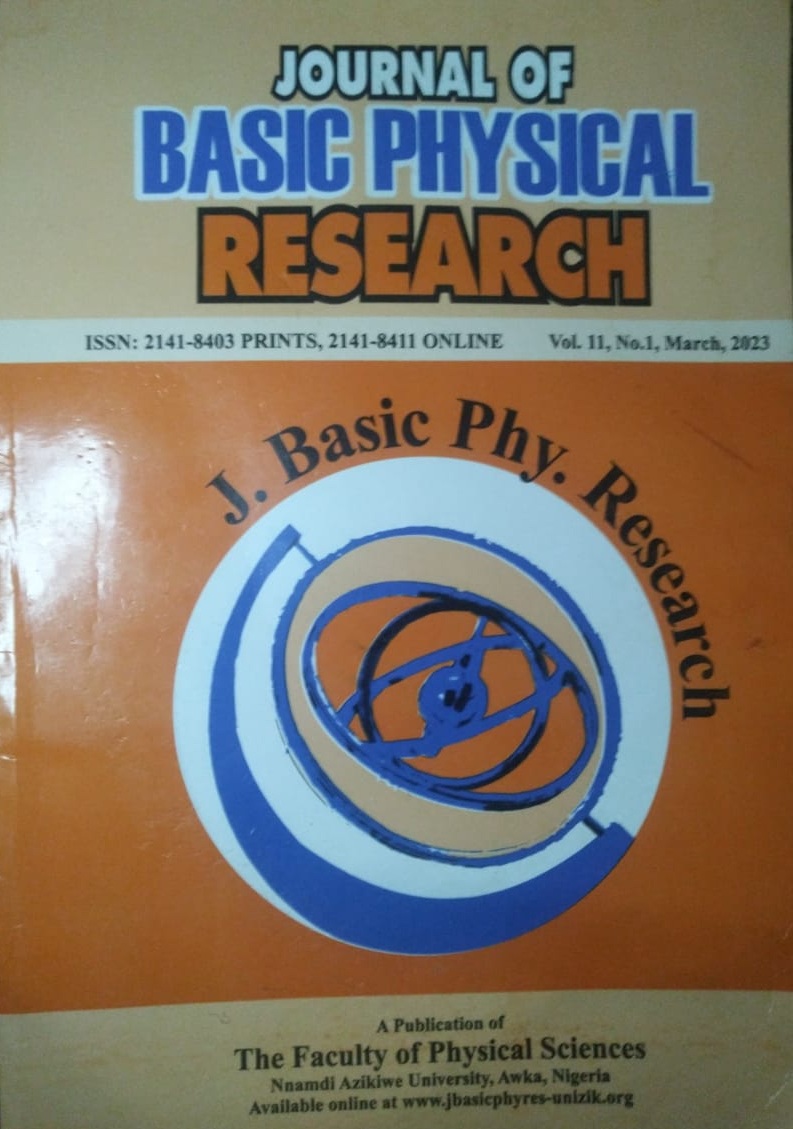TESTING THE USE OF AEROMAGNETIC DATA FOR THE DETERMINATION OF DEPTH TO MAGNETIC BODIES IN NKALAGU AND ENVIRONS
Keywords:
Slope Method, Anambra Basin, Basement Complex, Biostratigraphy, Exploration, High Resolution Aeromagnetic DataAbstract
High resolution aeromagnetic data of Nkalagu and its environs in South-Eastern Nigeria has been acquired and analyzed using slope method, in order to determine the depth to magnetic bodies, as well as delineate the basement morphology and the structural features within the study area. The qualitative assessment of total magnetic intensity (TMI) and residual anomaly maps of the study area reveal that the study area possesses high magnetic intensities which ranges from 7890 nT to 8114 nT and -110 nT to 104 nT respectively. The analytical map reveals that the structural trend within the study area is mainly Northeast-Southwest and (NE-SW) directions which agree with the fault orientation within the Benue Trough, also The area is intensely fractured with major regional faults trending in Northeast-Southwest (NE-SW) direction. Five (5) selected magnetic profiles were taken perpendicular to the direction of the magnetic anomalies, namely K-Kᴵ, L-Lᴵ, M-Mᴵ, N-Nᴵ, and O-Oᴵ. The slope method analysis revealed that the study area possess a two layer depth model; the shallower and deeper bodies which varied from 1.68 km to 2.05 km and 2.84 km to 6.38 Km respectively. The basement tomography map suggest thick sediment with their contours widely spaced at the northern and Eastern parts, and shallow sediment toward the Western part with contours closely spaced. The 3-D tomography map shows the presence of peaks (uplifts) and depressions, a typical expression of folds. The findings suggest that the study area is highly fractured and possesses possible mineralization path and the existence of high Cretaceous sedimentary thickness may favour hydrocarbon accumulation.


